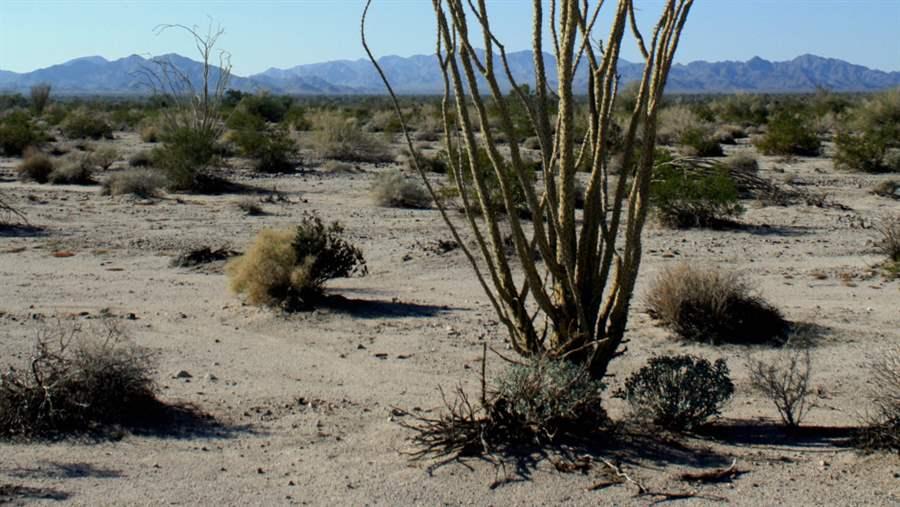Pew Applauds BLM Draft Plan for California Desert; Seeks Further Conservation
 © Matt Skroch
© Matt SkrochAn area of desert sits before the Chuckwalla Mountains in California.
The Bureau of Land Management (BLM), the state of California, and local agencies released on Sept. 23 a Desert Renewable Energy Conservation Plan (DRECP), which identifies areas across the California desert that will be either fast-tracked for solar projects or off-limits to renewable energy projects.
Local communities, elected officials, and state and federal agencies all played important roles in identifying the best uses of the desert area, which stretches 350 miles from Owens Valley to El Centro and is home to an extraordinary array of plants and animals as well as recreational, historical, and cultural attractions. As one of the largest remaining intact desert landscapes in the United States, the California desert could host large solar energy generation facilities capable of contributing to California’s goal of securing 33 percent of its energy needs from renewable sources by 2020.
Interior Secretary Sally Jewell has said that she considers the plan to be a pilot project for her agency’s regional mitigation policy--a signature Department of Interior initiative that looks to balance conservation with other uses of public lands.
According to Ken Rait, a director of The Pew Charitable Trusts’ U.S. public lands project, “The plan provides an unprecedented opportunity for BLM to engage in landscape-scale conservation across the desert if key critical wildlife and recreation areas are protected and if renewable energy development is focused on less environmentally sensitive areas.” He added that Pew “applauds BLM and cooperating agencies for their efforts to balance what will be considerable new solar development across the desert with protections for a substantial amount of land.”
However, Rait cautioned, “We’re concerned the draft plan leaves some important public lands, such as the Silurian Valley, McCoy Wash, and Iron Mountains, vulnerable to development.”
DRECP’s success hinges on locating renewable energy projects in less environmentally sensitive areas because much of the California desert contains wilderness-quality lands and critical habitat for imperiled species such as the desert tortoise and Mohave ground squirrel.
While the plan identifies substantial areas of previously disturbed land—such as abandoned agricultural areas southwest of Victorville and northwest of Lancaster—as appropriate for the development of such projects, other proposed areas are relatively pristine public lands.
“The first and obvious place for solar development is on land that doesn’t already serve as natural open space or prime wildlife habitat,” says Rait. “The draft plan provides some important protections, but we urge the agencies to conserve additional public lands and focus development of renewable energy projects on areas that don’t serve as important wildlife habitat or contain other outstanding natural characteristics.”











